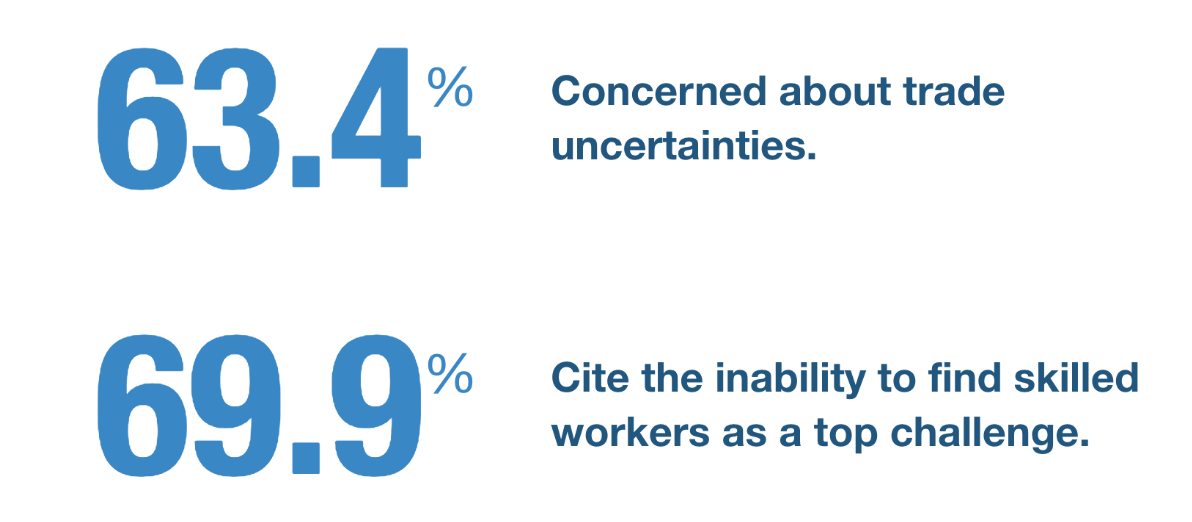Every company needs to compete, and none harder than manufacturers. Efficient Operations are a necessity in all manufacturing businesses, and it falls on the Operations Manager to drive operational efficiencies wherever possible.
It is the responsibility of the operations manager to oversee the production process while working to improve quality, productivity and efficiency. In order to accomplish these goals, many operations managers implement lean manufacturing. Lean manufacturing is a method of eliminating waste within the manufacturing process to reduce costs while maintaining productivity and product quality. The practice of lean manufacturing was initially brought to the public by Henry Ford’s assembly line, but became popularized by a standardized set of tools used by Toyota known as the Toyota Production System (TPS) in the early 20th century. The TPS identifies eight types of waste, which are Defects Waste, Overproduction Waste, Waiting Waste, Non-Utilization Waste, Transport Waste, Inventory Waste, Motion Waste and Overprocessing Waste, with the objective of eliminating as many as possible.
Below are 10 Tools Efficient Operations Managers use to Reduce Waste (while promoting quality, productivity, and efficiency!)
Some of these tools you're likely familiar with, but there are some that are not yet on the radar of even the best manufacturing operations managers. Double-check to see if there are gaps in your toolset which you could close to become an even more efficient operation.
Poka-Yoke (Mistake Proofing)
Mistake proofing involves taking disciplinary measures to prevent and/or correct production defects as they occur. The main purpose of mistake proofing is to anticipate and/or rectify incidents that occur which inhibit production. After identifying these possible issues, corrective measures can be implemented which maintain production efficiency.
Hansei (Self-reflection)
Self-reflection is best utilized to identify mistakes made and implement practices which prevent any recurrences. Self-reflection should be applied at the end of every task, whether or not any failures were detected or not. Improvements can always be made to improve processes.
Jidoka (Autonomation)
Autonomation is the process of combining automated processes with human troubleshooting. Autonomation consists of automated manufacturing processes in which human workers are used to identify product defects and immediately address the issue before the problem advances. Autonomation assists in reducing the amount of work added to a defective product.
Just-In-Time (JIT)
Just-In-Time production is the method in which only the required amount of materials are supplied to a production process at the stages they are needed. By only providing the amount of materials that will be used, inventory and transport waste are reduced while improving overall efficiency.
Heijunka (Production Leveling)
Production leveling is used to facilitate Just-In-Time production by maintaining average amounts of materials to produce a predetermined amount of product. By applying production leveling, production may be carried out at a constant and predictable rate over a period of time without being inconvenienced by a lack of materials.
Kaizen (Continuous Improvement)
Kaizen is a philosophy which advocates for maximum quality and efficiency through a series of continuous improvements in standardized work. Through identifying aspects in standardized work which may be improved, overall efficiency may be increased while eliminating wasteful actions.
Genchi Genbutsu (Go and See for Yourself)
Genchi Genbutsu is the practice of going to the location in which a problem exists and assessing it personally. This method cuts down on the time which it takes for information to travel, allowing managers to address the problems directly in a timely manner.
Nemawashi (Laying the Foundation)
Nemawashi is the process of openly discussing managerial decisions that must be made while seeking the opinions of other employees. By sharing information and involving employees in the process, new ideas may arise which can eliminate waste.
Kanban (Sign)
Kanban is a system in which material inventory status is displayed and easily conveyed. As material inventory is depleted, the status can be quickly visualized and more material can be promptly ordered. The Kanban system has the ability to avoid inventory overcapacity while supplying the required amount.
5S System
The 5S system is a method to organize work spaces to maximize efficiency. A 5S system promotes the idea that everything has a place. The 5S system can be broken down into five simple steps.
- Seiri (Sort): Determination of what is actually needed in the area
- Seiton (Set): Establishment of locations for each item
- Seiso (Shine): Performance of regular cleanings and maintenance
- Seiketsu (Standardize): Formulation of standardized task to maintain the area
- Shitsuke (Sustain): Process of routinely performing the standardized tasks
Implementing many of these operations efficiency tools requires access to real-time production data. Perhaps it's time to try a demo of a Smart Factory Analytics tool to improve your operations efficiency efforts?
















